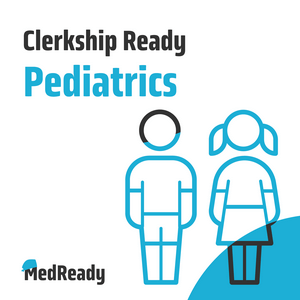Clerkship Ready: Pediatrics is a podcast aimed at medical, PA, and NP students who are entering their clinical rotation in Pediatrics. It covers topics including Your Pediatric Survival Guide - Tips and Tricks, Before Your First Well-Child Check, Peds GI Clinic, and more. Each podcast walks you through a portion of what you’ll experience during your clinical rotations, gives you tips for excelling, preps you for the clinical questioning that’ll occur, and sets you up to overall Honor the rotation!
Email
[email protected] with comments, questions, and episode ideas.
##Legal Disclaimer##
The opinions expressed within this content are solely the speakers' and do not reflect the opinions and beliefs of their employers or affiliates.
